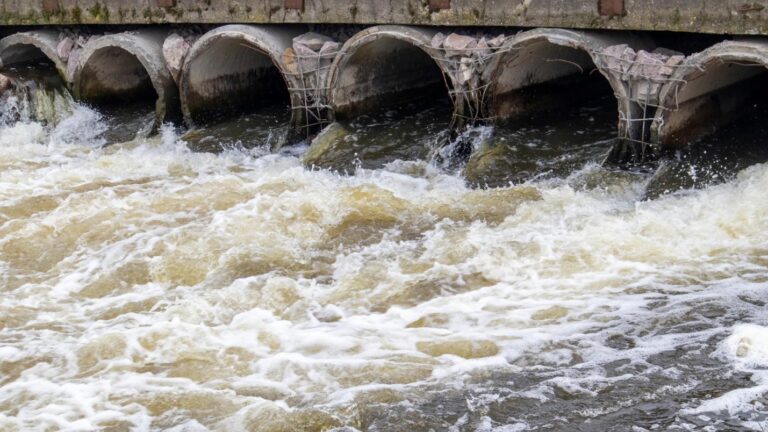
Erosion control might not seem like the most urgent concern on a construction site but overlooking it can lead to devastating consequences. Every year, companies across the U.S. face millions of dollars in fines for non-compliance with environmental regulations. Construction projects can get into serious legal and financial trouble if a lack of erosion and sediment control Marin County leads to the pollution of waterways.
Failing to implement proper erosion and sediment control measures can cost your business far more than the upfront expense of compliance. Beyond financial penalties, you risk project delays, legal battles, and damage to your reputation.
Read on to learn more and uncover the insidious hidden costs of skipping erosion control. Plus, we’ll explore how proactive planning can save your company from unnecessary setbacks and expenses.
Erosion isn’t just a natural process—it’s accelerated by construction activities that disturb the soil. When soil is displaced without effective erosion and sediment control products, it can lead to sediment runoff into nearby waterways, clogging drainage systems, polluting the water, and harming aquatic ecosystems. This environmental damage can have a ripple effect:
Sediment can wash onto neighboring properties, frustrating residents and requiring costly cleanup efforts.
Excess sediment in rivers or lakes disrupts local ecosystems and water quality, which may lead to severe financial and legal penalties.
Erosion can compromise the structural integrity of your site, increasing the risk of collapse or failure which puts the safety of your team and equipment at risk as well.
One of the most immediate consequences of neglecting erosion control is the financial hit. These costs can stack up quickly and become a major burden on your budget.
Fines for violating regulations and the expense of restoring damage from runoff are some of the immediate consequences:
Agencies like the Environmental Protection Agency (EPA) and state regulators impose steep fines for violating erosion and sediment control regulations. For example, the Clean Water Act allows fines of up to $50,000 per day for non-compliance.
If sediment runoff impacts nearby areas from a lack of erosion prevention measures, you may be held responsible for restoring the affected environment. This can involve draining clogged waterways, replacing damaged vegetation, or repairing drainage systems.
Overlooking erosion control can indirectly cause delays and insurance issues down the line:
Regulators can shut down your project until erosion control measures are properly implemented, throwing off schedules and increasing labor costs.
Frequent violations or environmental incidents can make your business appear high-risk, leading to higher premiums or policy cancellations.
Neglecting erosion control isn’t just bad for business—it’s illegal. Construction sites are subject to strict regulations at the local, state, and federal levels to prevent environmental harm.
Being proactive and knowing the science behind erosion control blankets isn’t just about avoiding fines, it’s about staying in business.
In today’s competitive construction industry, your reputation matters! Poor erosion control practices can tarnish your company’s image, affecting your ability to win future contracts.
Communities care about environmental protection, and they take notice when construction projects cause harm. Negative press coverage or public complaints can damage your brand, leading to lost trust from clients and stakeholders.
Word spreads quickly in the construction world. Companies with a history of regulatory violations or poor site management may struggle to compete for high-profile projects. Clients want contractors who prioritize compliance and professionalism.
When erosion control is neglected, you’re not just risking the current project—you’re jeopardizing your future opportunities.
The good news is that these risks are entirely avoidable with a proactive approach. Investing in proper erosion control measures upfront can save time, money, and headaches later on.
Avoid the financial, reputational, and legal risks of improper erosion control with these best practices:
Incorporate erosion control measures into your project design and budgeting process.
Implement BMPs such as silt fences, sediment basins, and erosion control blankets. Products like these are available at Stevenson Supply & Tractor Co. to meet your site’s needs.
Conduct frequent site inspections to ensure compliance and adjust measures as needed.
Keep your Stormwater Pollution Prevention Plan current, especially when site conditions or project timelines change.
Investing in erosion control isn’t just about avoiding costs—it’s about creating value. By safeguarding your site, protecting the environment, and maintaining compliance, you position your business for long-term success.
Skipping erosion control might seem like a shortcut, but it’s a costly mistake that can derail your entire project. From financial penalties to legal trouble and reputational harm, the risks far outweigh the perceived savings.
By prioritizing compliance and adopting proactive erosion control practices, you not only protect your bottom line but also demonstrate your commitment to sustainability and professionalism.
At Stevenson Supply & Tractor Co., we offer a wide range of erosion control products to help you stay compliant and keep your projects running smoothly. Contact us today or give us a call at (707) 575-3335 to explore our solutions or speak with a member of our team for expert advice. Don’t wait until it’s too late, take control of erosion today!
President/CEO
Kent Stevenson is the owner and president of Stevenson Supply & Tractor Co., a family-owned equipment and supply company serving Sonoma County and the North Bay agricultural community since 1967. Under Kent’s leadership, the company has expanded from a small tractor dealership into a trusted regional provider of agricultural equipment, hardware, fencing, and repair services.
Kent is known for his deep agricultural knowledge, hands-on approach, and commitment to serving the local farming and vineyard community. His business philosophy blends old-fashioned service with modern efficiency, ensuring every customer—from homeowners to commercial growers—receives honest guidance and reliable equipment solutions.
Stevenson Supply continues to reflect the values Kent grew up with: hard work, integrity, and dedication to supporting the people who keep Sonoma County growing.